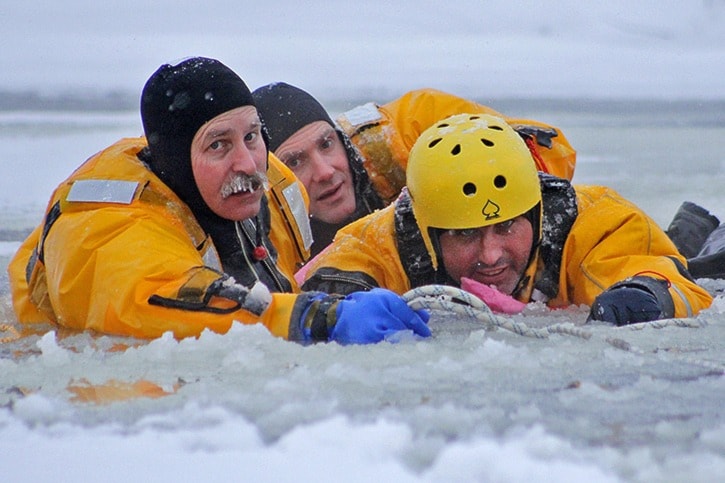The leader of the local search and rescue team was in council chambers on January 27 to talk about the cases of 2013 and provide information on how the rescue team has progressed through the year.
Chris Mushumanski, leader of the Nechako Valley Search and Rescue team, gave council the number of call-outs this year, a whopping 22. Compared to 2012 when the NVSAR team was called out to only 14 searches, and how previously they would only be called out eight to 12 times a year, this number is impressive.
Back in 1991, there were 400 callouts in the province and in 2013 it was 1,300. The difference in call-outs varies by region but B.C. does have more than all the rest of Canada combined.
The teams is called out from all over the province too. Mushumanski presented council with a map showing all the cities they've traveled to in the last year and showed the local team had been called out to places in the Lower Mainland as well as Coastal and Northern B.C.
During the meeting, Mushumanski brought up plans that the local team is looking into taking over use of the old cadets building on Burrard Avenue. They would use it as an office space, meeting and training area.
In 2013, Nechako Valley Search and Rescue added six new members trained in ground search and rescue. Now they have four search managers, 10 team leaders and 48 searchers.
Mushumanski told council that the rescue team was looking for $5,000 in support from the District of Vanderhoof for 2014 and council agreed to put it in their budget discussions.
They want to get their special swift water rescue team certified in advanced flat ice rescue and advanced swift water but the funding for these training opportunities is not always available, which was why Mushumanski met with council.
Search and Rescue teams in B.C. must rely on government grants that aren't always sufficient, a more effective way to pay for volunteer training and to compensate volunteers for missed work hours is needed.
"To ask volunteers, first of all, to go out and search or rescue somebody is one thing but then to ask them to go about trying to fund the equipment and training they need to do that seems a little excessive and has increased hugely in the last few years compared to the expectations back when I joined search and rescue in the 90s," said Mushumanski to the Omineca Express back in August, when they had already dealt with 17 call-outs. "When you look at how much time and effort is being put into making those teams able to funded and trained, it's expecting too much from volunteers and that is first and foremost what search and rescue is for the province, they’re all volunteers."
NVSAR began last year recovering from a theft of over $10,000 worth of equipment including radios and GPS devices. Then they were involved in the double homicide investigation of early 2013 as well as assisting in the Madison Scott case several times. They also assisted in a search for a missing person in Fort Fraser.
Over the last year NVSAR was called out to four multi-day and large searches involving over 150 people. The first large search for Immaculate Basil from Fort St. James which was a five day search operation.
Next was the boating accident on Francois Lake where Syd Neville went missing. They never found Neville but a different body was found, that of John Mowat who went missing 29 years ago.
Later in the year, the team was called out to Takysie Lake south of Burns Lake to look for missing person Brett Smith.
In September, search and rescue members were called to Terrace to search for two missing mushroom pickers. One of the pickers died in the forest but his friend managed to walk out after surviving for 15 days.
